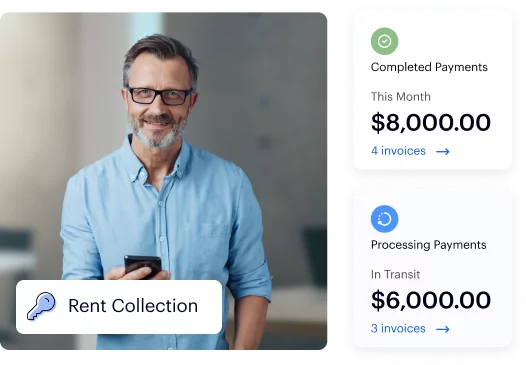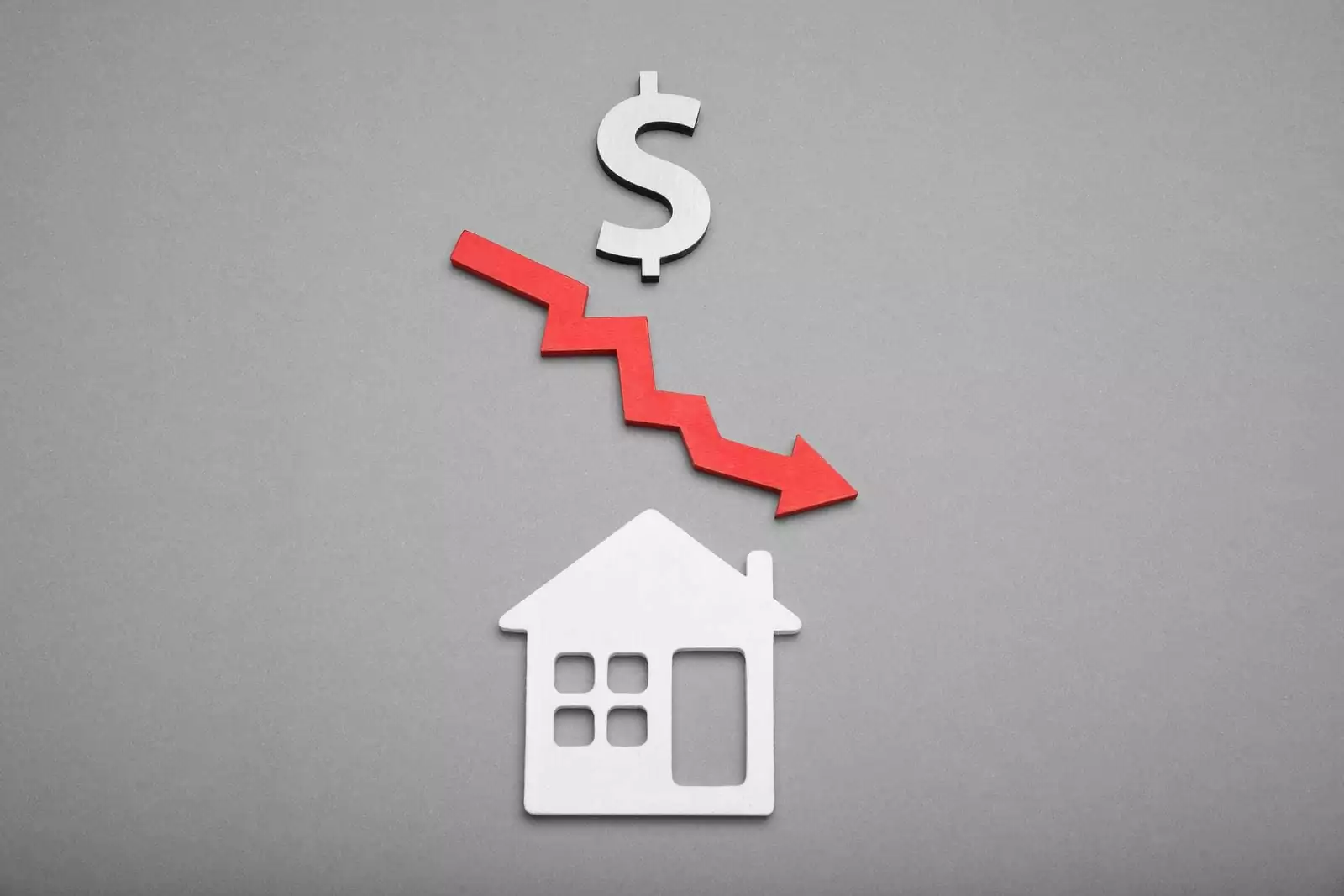Rental property depreciation is something every property owner will have to deal with at some point. Learn more about rental property depreciation and what it means to you in terms of tax savings and expenses in this complete guide to rental property depreciation.
Put rent collection on auto-pilot
Get paid on time with automated rent payments, reminders, and late fees.
What is Depreciation in Rental Property?
Depreciation is a useful tool for rental property and real estate investors when it comes to lowering their annual tax bills. It allows them to deduct the cost of their property and improvement expenses annually and over a long period of time.
In fact, this period of time is actually 27.5 years for residential real estate and 39 years for commercial real estate. This is known as the recovery period, and it’s the length of time depreciation value can be claimed on your property taxes.
The basic premise of rental property depreciation is that through usage, wear, and tear, or obsolescence, a tangible asset, like property, loses value over time. This loss can be calculated and claimed on a tax return as a deduction over the recovery period until the property is sold or your entire cost basis is recovered, which is the amount your property is worth.
A property owner can claim depreciation on rental property as long as they own the property and generate rental income from it. That means that if you use the property as part of your business or as a source of rental income, the property not only has a useful life but is expected to last more than a year.
Depreciation functions as a way of getting a benefit from an expense without writing a check. It allows you to take deductions on the perceived decrease in the value of your property over time.
Depreciation also allows the property owner to spread out a deduction over several years rather than claiming the total amount all at once and, as a result, getting hit with a higher tax bill the very next year.
Thankfully, beyond depreciation, you can claim more tax deductions to lower your annual tax bill, and expense management makes claiming those depreciation deductions a lot easier.
How to Depreciate a Rental Property?
Depreciation begins immediately after a property becomes available for rent or goes into commercial property use. If you begin renting out your property during a calendar year that’s already begun, the amount of rental property depreciation available to you is prorated in that first year.
Below you’ll find out how much depreciation you can claim, depending on the month that the property is available for rental according to the IRS Publication 527, which pertains to residential rental properties.
Once a property is in service for business use or rental income generation for more than one year, you would depreciate it an equal amount at 3.636% for each year it’s rented for up to 27.5 years.
Keep in mind that only the value of the building or home can be depreciated, not the value of the land it sits on.
There are two systems under the Modified Accelerated Cost Recovery System (MACRS) used by the IRS to calculate depreciation on a rental property, and you must determine which system your property falls under before you can go on to calculate its depreciation cost.
| Month | Rate (%) |
|---|---|
| January | 3.485% |
| February | 3.182% |
| March | 2.879% |
| April | 2.576% |
| May | 2.273% |
| June | 1.970% |
| July | 1.667% |
| August | 1.364% |
| September | 1.364% |
| October | 0.758% |
| November | 0.455% |
| December | 0.152% |
The General Depreciation System
The GDS is the depreciation system that most rental property owners use when calculating rental property depreciation. It applies to the majority of properties other than properties that must use the Alternative Depreciation System (ADS) by law or if an owner elects to use the ADS and that choice is irreversible. Under the GDS, a residential property can depreciate for the standard 27.5 years.
The Alternative Depreciation System
The Alternative Depreciation System is used under the following circumstances:
- The building has a qualifying business used 50% of the time or less
- The building is used mostly for farming
- The building is financed by tax-exempt bonds
- The building is used for an income-generating endeavor that itself is tax-exempt
The system used affects the length of the depreciation recovery period. Under the ADS, the recovery period is 30 years if the entire property is generating rental income after Dec. 31, 2017, and 40 years if the property started generating rental income before that.
How to Calculate Depreciation on Rental Property?
Calculating depreciation on rental property under the IRS’s Modified Accelerated Cost Recovery System is relatively easy and straightforward.
All you need to do is follow these steps:
Determine the cost basis of the property
The cost basis of your property is how much you paid for the property plus closing costs and the cost of improvements you’ve made to the property (i.e., a pool, a gym, a deck, etc.) minus the value of the land it sits on.
For example, if you paid $1 million for a property, your closing costs were $20,000, and let’s say you added a $4,000 deck to the property, but the land costs $60,000, your cost basis equation would look like this:
1,000,000 + 10,000 + 4,000 + 20,000 – 60,000 =
So the adjusted cost basis of your property would be $974,000
If you’re wondering what costs may constitute closing costs and/or settlement fees that may go into your cost basis calculation, the list can include the following:
- Abstract fees
- Legal fees
- Recording fees
- Transfer taxes
- Title insurance
- Surveys
- Utility installation fees
- Any amount the property seller owes that you agree to pay, such as back taxes, interest, recording or mortgage fees, charges for improvements or repairs, and sales commissions.
There are also closing costs and settlement fees you can’t include as part of your basis cost calculation, and these are the following:
- Fire insurance
- Rent or other charges related to the property’s occupancy before closing.
- Any charges related to getting or refinancing a loan, such as points (discount points and loan origination fees), mortgage insurance premiums, loan assumption fees, cost of a credit report, and fees for an appraisal required by a lender.
Calculate the Property's Depreciation Cost
To calculate the depreciation cost of a property, divide the basis cost by the recovery period, which is 27.5 years for residential rental income properties.
This is known as the straight-line depreciation method for calculating depreciation cost, and it’s the only acceptable formula for calculating the depreciation cost of a property, according to the IRS.
Alternatively, the IRS makes it even easier by telling you the percentage of depreciation expense you can claim each year for taxable income. So, just multiply your basis cost by 3.636%, which is the annual depreciation percentage for income properties. This will let you get your rental property depreciation cost each year.
So, if your property is worth $1,000,000, multiply that by 3.636% to get your rental property depreciation cost of $36,360, which you can then claim as a deduction on your annual tax return.
In the first year, if your property didn’t start generating rental income right from the first day of the year to the last, just pick the percentage from the month when it did go into service from the table in the “How to Depreciate a Rental Property” section of this article and multiply the basis cost by that percentage instead in year one.
How to Avoid Depreciation Recapture Tax on Rental Property?
You may be able to claim your real estate investment property’s annual depreciation cost as a yearly deduction. However, when you sell that same property, the IRS will try to collect or recapture that amount through a recapture tax, which is the difference between the sale value and the property’s depreciated value.
Your rental property depreciation recapture tax is capped at 25% of your original depreciated value, depending on your usual rental income tax rate when you profit from the sale of the property.
After the IRS takes recapture tax, capital gains tax is applied to the remainder of your profit. Learn more about capital gains tax in the Tax Guide for Buying and Selling Real Estate.
The good news is that you can avoid recapture tax in the same way that you can avoid capital gains tax, and that’s by deferring both of them through a 1031 Exchange.
A 1031 Exchange is named after the section of the American Tax Code where this exchange is discussed, and it allows you to defer paying both capital gains and recapture tax as long as you are buying another rental property with the proceeds that you gain from the sale of your current property.
As long as you are continuing your rental business for taxable income and buying what the IRS calls a property that’s “like-kind” to your previous one, you will not have to pay both capital gains and recapture tax until you sell the property you just acquired.
However, it’s important to note that you have 45 days after closing to identify up to three replacement income properties. If you don’t identify a replacement property within 45 days, you will not be able to pull off a 1031 Exchange.
Final Thoughts on Depreciation: Short-Term Gain, Long-Term Pain
Your depreciation cost will lower your tax bill every year, saving you money. However, that deduction could end up putting a dent in your profits from the sale of the same property it initially saved you money on, thanks to the Depreciation Recapture Tax.
Make sure your landlord banking is on point, and carefully consider whether you really want to deduct rental property depreciation to save money in the short-term only to end up paying recapture tax when you sell.
Understand the risk of recapture tax and how buying another rental or investment property may help you avoid it temporarily.
Stress-free rent collection
- Easy setup for landlords and tenants
- Fast payments
- Automated reminders and late fees

Don't miss these

5 Best Loan Types When Buying a Rental Property
Whether you’re thinking about buying your first investment property or twelfth, chances are you’re going to need a real estate loan. The money for your...
26 January 2022
Best Accounting Software for Real Estate Flippers in 2025
Navigating the real estate market in 2025 presents unique challenges for flippers, including margin pressure from rising costs. Accurate accounting is not ...
10 June 2025
Short-Term Rental Success: Create Business Travel Residences
A short-term rental (STR) business provides accommodation to families and business travelers on a nightly, weekly, or monthly basis. Owners of these busine...
24 May 2024


